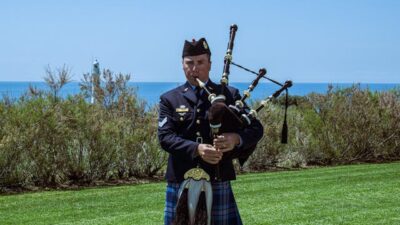Learn what are the traditional dresses of men? From the elegant kimono in Japan to the dapper kilt in Scotland, traditional men’s clothing showcases the rich cultural heritage and unique styles from all corners of the globe. Whether it’s the vibrant dashiki in Africa or the tailored suit in Europe, each traditional outfit tells a story and adds a touch of history and tradition to men’s fashion. So, let’s explore the diverse and colorful array of traditional dresses worn by men around the world, and discover the beauty and significance behind each garment.
What Are The Traditional Dresses Of Men?
What are the traditional dresses men? Men’s attire varies greatly from country to country, reflecting the unique culture, history, and traditions of each region. In this article, we will explore the traditional dresses of men from different parts of the world, highlighting their distinctive styles and significance.
Traditional Dresses of Men in India
In India, men wear a wide range of traditional attire that reflects the rich cultural diversity of the country. The most common traditional dress for men in India is the kurta and dhoti or pajama. The kurta is a loose, long tunic that is typically worn with a pair of loose-fitting trousers or a dhoti, which is a traditional Indian garment. Men also wear sherwanis for special occasions such as weddings and festivals. Sherwanis are long, fitted coats that are usually paired with a dhoti, pajama, or trousers.
Traditional Dresses of Men in Japan
In Japan, men traditionally wear kimono and hakama. Kimono is a traditional Japanese garment that consists of a T-shaped robe with wide sleeves, tied with a sash called an obi. Hakama are wide, pleated trousers that are worn over the kimono. Men also wear yukata, which is a casual, lightweight version of the kimono often worn during summer festivals or at hot spring resorts.
Traditional Dresses of Men in Scotland
In Scotland, men wear the kilt, which is a knee-length skirt-like garment that is typically made of wool and features a tartan pattern. Kilts are worn with a sporran (a pouch worn around the waist), a sgian-dubh (a small dagger), and ghillie brogues (traditional Scottish shoes). The kilt is a symbol of Scottish heritage and is commonly worn at formal events such as weddings and Highland games.
Traditional Dresses of Men in Nigeria
In Nigeria, men wear a variety of traditional attire depending on their ethnic group and region. One common traditional dress for men in Nigeria is the agbada, which is a flowing robe that is usually worn over a shirt and trousers. The agbada is often embellished with intricate embroidery and can be worn for special occasions. Men also wear buba and sokoto, which are loose-fitting, tunic-style shirts worn with trousers.
Traditional Dresses of Men in Mexico
In Mexico, men wear traditional attire that reflects the vibrant culture and history of the country. One common traditional dress for men in Mexico is the guayabera, which is a lightweight, button-down shirt with decorative embroidery. Guayaberas are often worn with trousers or shorts and are popular attire for festive occasions such as weddings and celebrations. Men also wear sombreros, wide-brimmed hats, and huaraches, traditional sandals made from leather.
Traditional Dresses of Men in Korea
In Korea, men traditionally wear hanbok, which is a traditional Korean dress that consists of a loose-fitting jacket and trousers. Hanbok is often made from silk or satin and features vibrant colors and intricate embroidery. Men also wear dobok, which is the traditional attire worn by martial arts practitioners. Dobok consists of loose-fitting pants and a jacket tied with a belt.
Traditional Dresses of Men in Italy
In Italy, men wear traditional attire that reflects the country’s rich history and fashion culture. One common traditional dress for men in Italy is the abito sartoriale, which is a tailored suit made from high-quality fabrics such as wool or linen. Italians are known for their impeccable sense of style and often pair their suits with leather shoes and accessories. Men also wear brogues, a type of dress shoe with decorative perforations, and panama hats for a touch of Italian flair.
Traditional Dresses of Men in Egypt
In Egypt, men wear traditional attire that reflects the country’s ancient history and cultural heritage. One common traditional dress for men in Egypt is the galabeya, which is a long, robe-like garment that is usually worn over a shirt and trousers. Galabeyas are often made from cotton or linen and are worn for formal occasions. Men also wear tarboosh, a type of fez hat made from felt or wool, and babouches, traditional leather slippers.
Traditional Dresses of Men in Brazil
In Brazil, men wear a variety of traditional attire that reflects the diverse cultural influences of the country. One common traditional dress for men in Brazil is the camisa, which is a tailored shirt made from lightweight fabrics such as cotton or linen. Men often pair their camisas with bermuda shorts or saruel pants for a casual yet stylish look. Men also wear alpargatas, traditional canvas shoes with rope soles that are popular in Brazil.
Conclusion
Traditional dresses play an important role in men’s fashion around the world, reflecting the unique cultural identity and heritage of each region. From the elegant kimonos of Japan to the vibrant guayaberas of Mexico, traditional attire offers a glimpse into the rich tapestry of global fashion. Whether worn for special occasions or everyday wear, traditional dresses are a symbol of pride, tradition, and history. So next time you see a man in a traditional dress, take a moment to appreciate the history and culture behind the garment.


